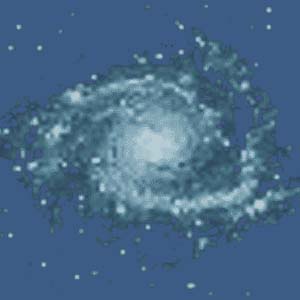****
Index
Curriculum Vitae
Publications
Presentations
Students
Journal Club
Delta
Contact
E-mail
Po polsku
|
•
Błażej Nikiel-Wroczyński
4th year of Astronomy, Jagiellonian University
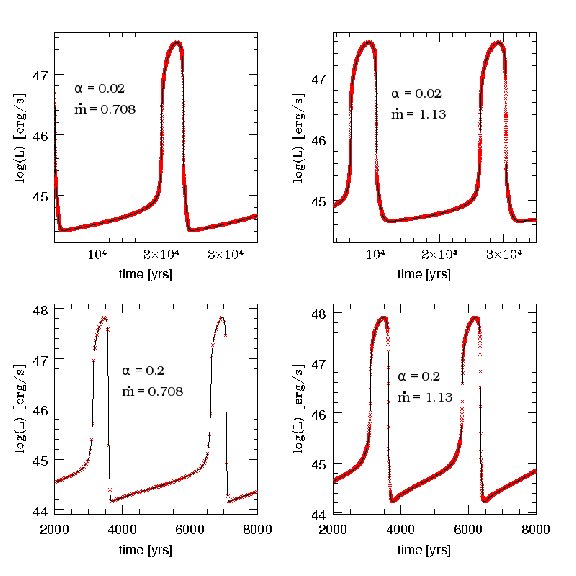 Modelled outbursts of accretion disk Modelled outbursts of accretion disk
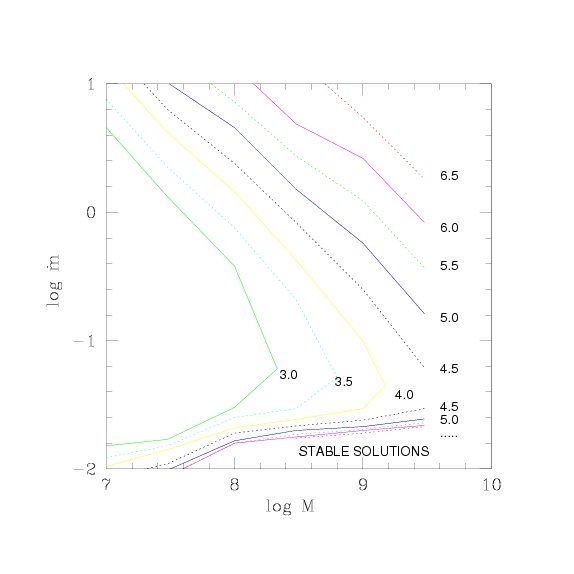 Topology of solutions for the constant separation times between the disk outbursts
The project was done under my supervision during the summer internship programme in the
Copernicus Astronomical Center, and continued after it's finished.
The student's task was to model the outbursts of an active galactic nucleus, caused
by the instability of an accretion disk around a supermassive black hole.
We calculated the model lightcurves for a grid of parameters (black hole mass, accretion rate and viscosity).
Then we plotted the resulting activity cycle durations on the mass-vs-accretion rate diagram.
The results are consistent with the ages of the young radiosources (GPS-type, i.e. the Gigahertz-Peak-Spectrum), estimated for a sample of objects based on the hot spot separation speeds (kinematic ages) or the upper limits derived from the synchrotron cooling time. These results have been published in the Astrophysical Journal. Topology of solutions for the constant separation times between the disk outbursts
The project was done under my supervision during the summer internship programme in the
Copernicus Astronomical Center, and continued after it's finished.
The student's task was to model the outbursts of an active galactic nucleus, caused
by the instability of an accretion disk around a supermassive black hole.
We calculated the model lightcurves for a grid of parameters (black hole mass, accretion rate and viscosity).
Then we plotted the resulting activity cycle durations on the mass-vs-accretion rate diagram.
The results are consistent with the ages of the young radiosources (GPS-type, i.e. the Gigahertz-Peak-Spectrum), estimated for a sample of objects based on the hot spot separation speeds (kinematic ages) or the upper limits derived from the synchrotron cooling time. These results have been published in the Astrophysical Journal.
Accretion disk model of short timescale intermittent activity in young radio sources
•
Maciej Sznajder
4th year of Astronomy, University of Zielona Góra
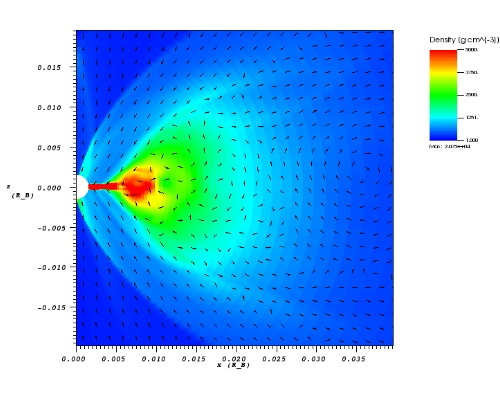 2-D movie from the torus simulation 2-D movie from the torus simulation
The project was done on the hydrodynamical modelling of the spherical accretion onto a black hole and accretion with small angular momentum, in 1 and 2 dimensions, using the ZEUS-MP code.
In this process, the gas with a given density and sound speed at infinity, is accreting spherically onto a central object (star or a black hole).
Because of rotation, the gas in the equatorial plane forms a centrifugally
supported torus, and the accretion rate onto the star is substantially reduced.
The detailed results and pattern of the system evolution depend on the adopted parameters: conditions at infinity, equation of state, rotation rate.
The student's project involved learning how to work with a hydro-code, the technical aspects of the simulations and their results analysis, as well as running the test simulations on a multiprocessor computer cluster.
These results of these calculations, as well as the 3-D models and their astrophysical interpretation, have been published in the Astrophysical Journal.
Time Evolution of the 3-D Accretion Flows: Effects of the Adiabatic Index and Outer Boundary Condition
•
Anna Prokopiuk
Vth year of Physics, University of Białystok
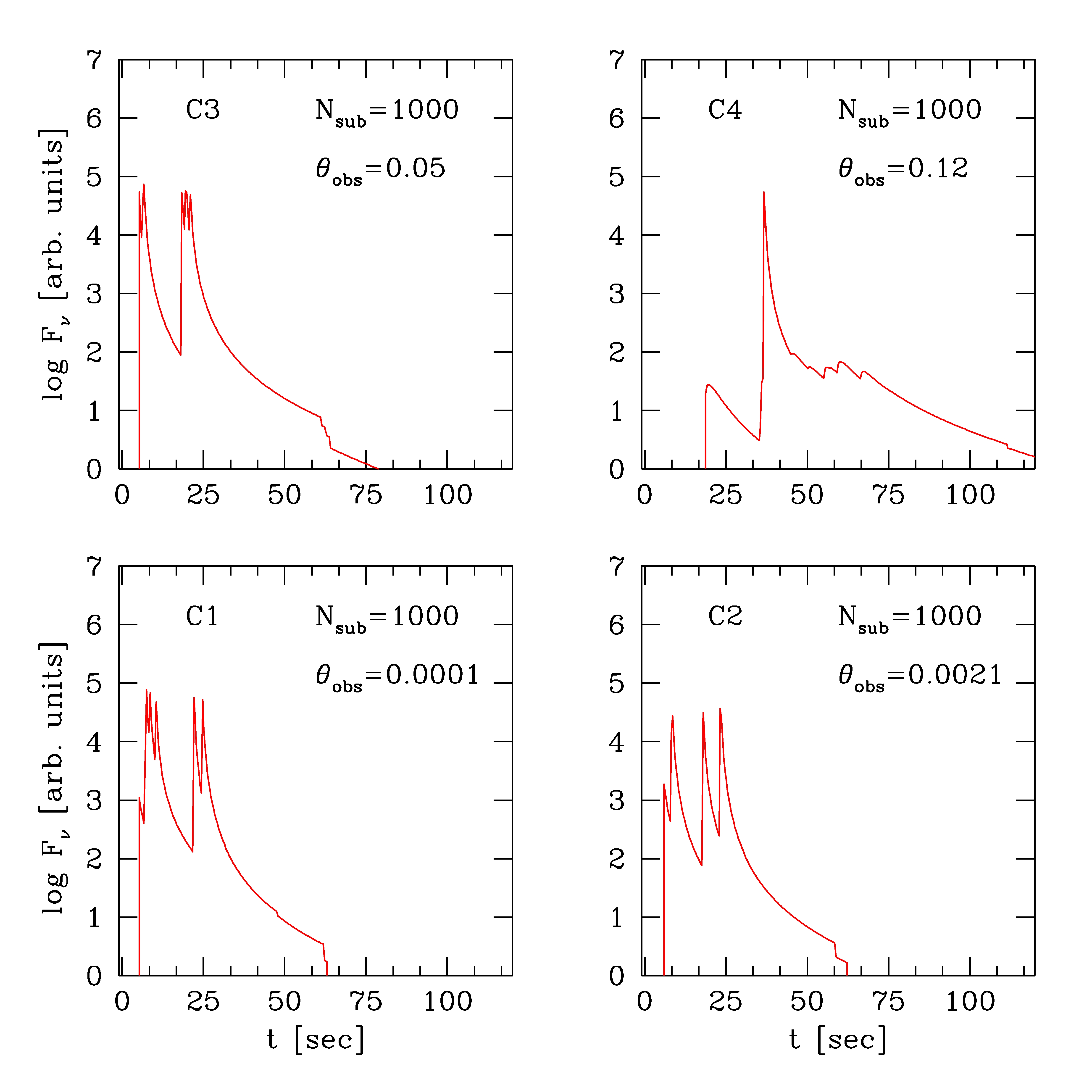 Modelled lightcurves of gamma ray bursts Modelled lightcurves of gamma ray bursts
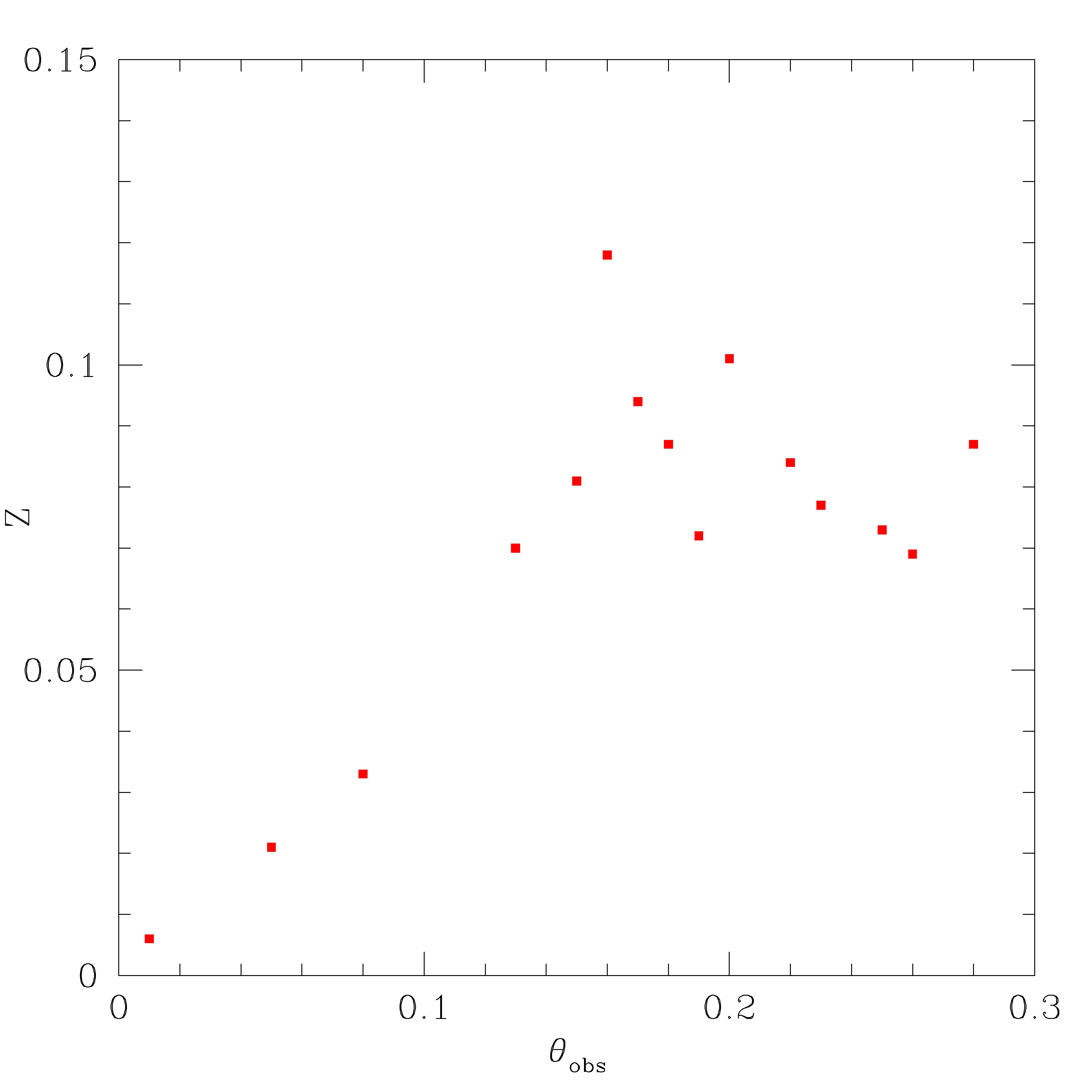 Dependence of the burst variability on the viewing angle
The project started under my supervision during the summer internship in Copernicus Center, and
continued thanks to the collaboration with the University of Białystok and dr. Marek Nikołajuk
under the Polish Astroparticle Network.
The student's task was to model the emission of a gamma ray burst, using the kinematic jet
model, and to analyze the burst variability, calculating the Power Density Spectra.
The results have been presented in the student's Diploma Thesis, written under my
supervision and defended in June 2009 at the University of Białystok. (Thesis title: "Time structure of Gamma Ray Bursts", written in Polish.) Dependence of the burst variability on the viewing angle
The project started under my supervision during the summer internship in Copernicus Center, and
continued thanks to the collaboration with the University of Białystok and dr. Marek Nikołajuk
under the Polish Astroparticle Network.
The student's task was to model the emission of a gamma ray burst, using the kinematic jet
model, and to analyze the burst variability, calculating the Power Density Spectra.
The results have been presented in the student's Diploma Thesis, written under my
supervision and defended in June 2009 at the University of Białystok. (Thesis title: "Time structure of Gamma Ray Bursts", written in Polish.)
|
|

